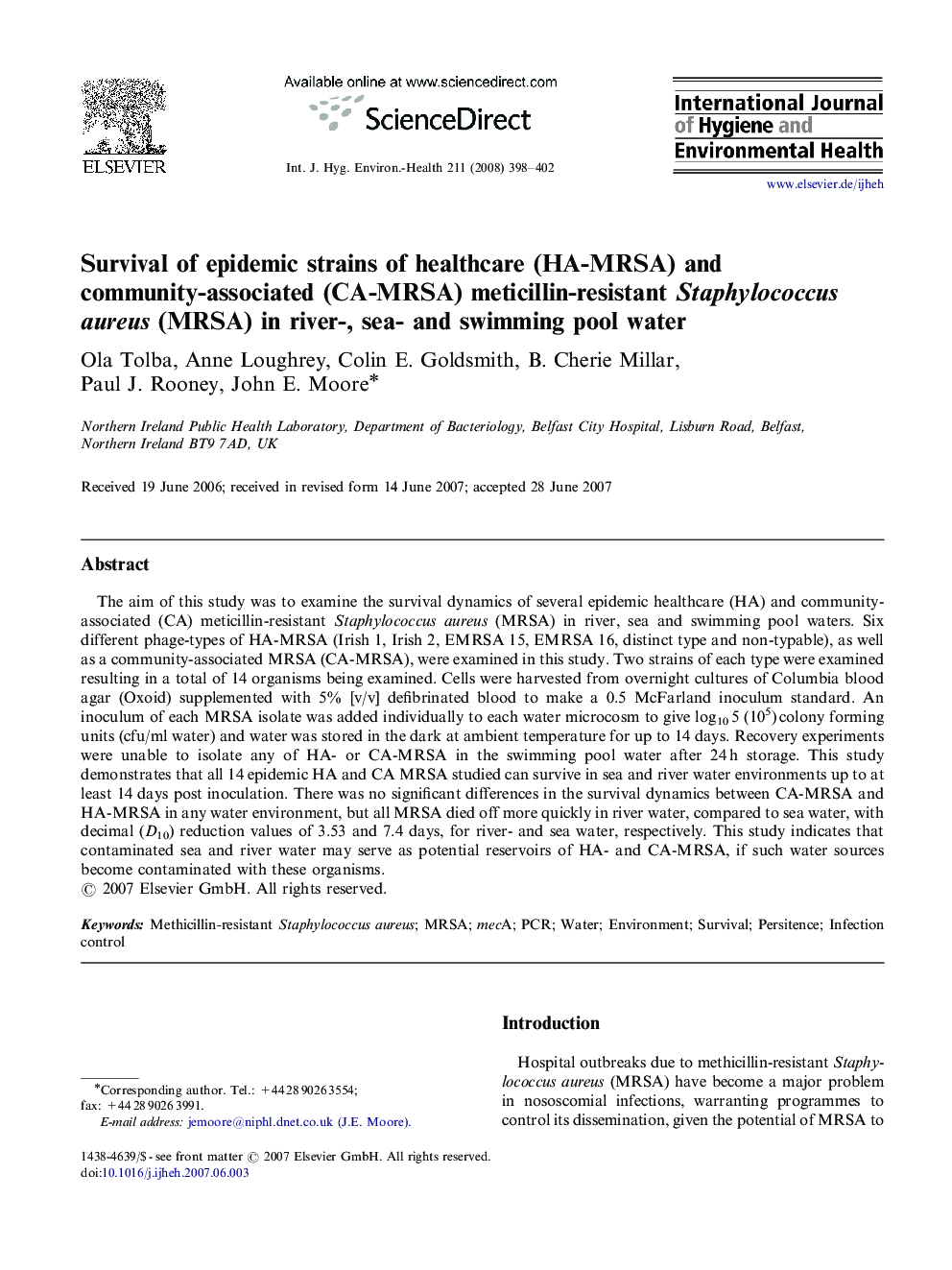| Article ID | Journal | Published Year | Pages | File Type |
|---|---|---|---|---|
| 2589262 | International Journal of Hygiene and Environmental Health | 2008 | 5 Pages |
The aim of this study was to examine the survival dynamics of several epidemic healthcare (HA) and community-associated (CA) meticillin-resistant Staphylococcus aureus (MRSA) in river, sea and swimming pool waters. Six different phage-types of HA-MRSA (Irish 1, Irish 2, EMRSA 15, EMRSA 16, distinct type and non-typable), as well as a community-associated MRSA (CA-MRSA), were examined in this study. Two strains of each type were examined resulting in a total of 14 organisms being examined. Cells were harvested from overnight cultures of Columbia blood agar (Oxoid) supplemented with 5% [v/v] defibrinated blood to make a 0.5 McFarland inoculum standard. An inoculum of each MRSA isolate was added individually to each water microcosm to give log10 5 (105) colony forming units (cfu/ml water) and water was stored in the dark at ambient temperature for up to 14 days. Recovery experiments were unable to isolate any of HA- or CA-MRSA in the swimming pool water after 24 h storage. This study demonstrates that all 14 epidemic HA and CA MRSA studied can survive in sea and river water environments up to at least 14 days post inoculation. There was no significant differences in the survival dynamics between CA-MRSA and HA-MRSA in any water environment, but all MRSA died off more quickly in river water, compared to sea water, with decimal (D10) reduction values of 3.53 and 7.4 days, for river- and sea water, respectively. This study indicates that contaminated sea and river water may serve as potential reservoirs of HA- and CA-MRSA, if such water sources become contaminated with these organisms.
